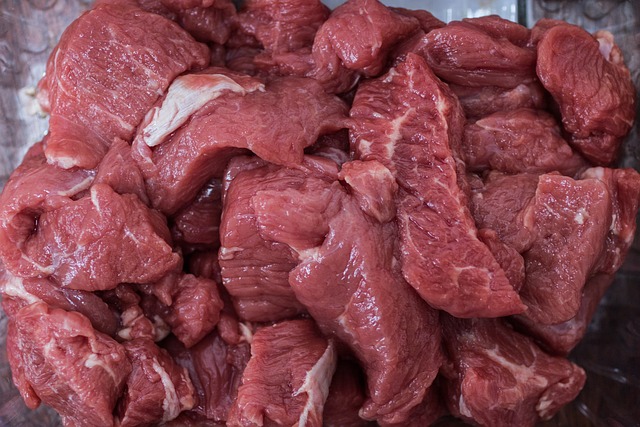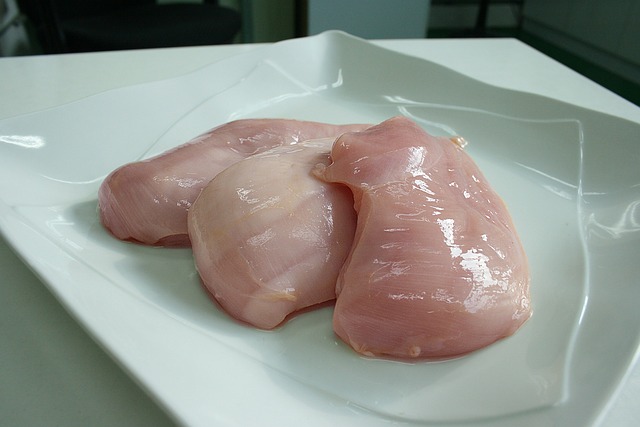Buying meat is a matter of trust, everyone has a shop they are used to, a butcher they stick to, who always delivers the best cuts and will tell you for sure if the goods are not worth buying. Everyone has their own butcher they always stick to under any circumstances. He is the one you can trust completely, the one who offers you the best meat and even gives you cooking advice. If you want to put really good quality food on the table, it makes a difference what kind of meat you choose.
A few years ago I found a butcher’s shop where I can take the meat home with complete confidence. I chose it at first because it was the closest shop where, if I phoned in my order in the morning, I could have it delivered within a few hours or even delivered to my door. And the goods were impeccable and always fresh. According to the shop manager, butchering is a “matter of trust”, as customers return to a place where they always get good quality and fresh meat.
While it is important to have a professional to whom we give our opinion, we also pay attention to a few things to make sure we have the right quality meat on our table. When buying beef, we should be particularly careful what we buy, smell, and feel the meat, and don’t be afraid to ask questions.
They are always helpful and even give cooking tips to those who are scratching their heads wondering what to choose for Sunday lunch. I asked one of them to tell us about the characteristics of fresh meat, and he said the key is in our senses.
While it is important to have a professional in whom we have complete trust, we also have to pay attention to a few things to make sure we have the right quality meat on our table. When buying beef, we should be particularly careful what we buy, smell, and touch the meat, and don’t be afraid to ask questions.
How does a butcher help?
More than you might think. You don’t get tips like this in the big supermarkets.
People are rediscovering smaller butchers. At least that’s what we’ve noticed lately. As demand shifts towards quality food consumption, butcher shops where you can ask about what’s on offer are becoming more popular.
Quality meat
You can ask for advice on how to use meat, for example. You can ask the butcher what he recommends for grilling or even ask for tips for Sunday lunch.
You can ask questions that you probably wouldn’t get in a big supermarket. And information is valuable, especially when it comes to cooking and ingredients.
Plus, the butcher’s shop has an atmosphere – at least I think so.
And as we know, good butchery is a matter of trust. Especially nowadays, when we’re rediscovering the taste of home cooking. So the opportunity to ask questions and make a personal connection has become quite valuable. We probably don’t stand a chance of that in a hypermarket.

How is good meat?
Beef is bright red, chicken is also bright, not ‘pale’. If the chicken is too yellow, the fowl may not be so-called scratchy at all, it may just have had a colouring added to the feed that has made the skin take on that colour. Faded meat may also mean that the product was previously frozen and only released before sale.
What to look out for?
A good butcher will always work with the same suppliers, it’s not the price that matters, it’s the consistent quality. Customers usually ask the same questions before buying meat. They want to know where the meat comes from and when it arrived. The owner also says that meat stored at the right temperature, between 0-5 degrees, will be fine for 2-3 days. The thing to watch out for is that if the meat is dry around the edges, it has been in the fridge for a while.
No moisture underneath
Meat loses moisture during storage, but if it sits for too long, this moisture will collect underneath. This meat is better not to buy.
Too much is not a good signal
If a shop sells too much meat, it does not necessarily mean that it is of good quality, as we do not know how long it has been on the shelves, or if they have been able to get cheaper meat of lower quality.
The texture of the meat
In general, good quality meat has a firm feel on the outside and a dense texture.
The color of meat
When you buy beef, its color tells you a lot about it, and it’s something you notice as soon as you hold it in your hand. Good quality beef is a beautiful red, not brown, green, or grey. If you see meat like this, don’t buy it.
Keeping the animal
Beef that produces good quality meat grazes freely, eats fresh grass, and is not treated with antibiotics.
The price of meat
Different cuts take different amounts of time to prepare. It is also worth knowing that the cheaper the meat, the longer it will take to prepare. Meat that is too old will be a little more yellowish and chewy, while younger meat will be whiter and much more tender and flavorsome. In terms of price cheaper meat is often filled with water, which will cook off immediately during cooking. So it is more worthwhile to choose more expensive meats. However confident you are in your decision, it is also worth asking your butcher what meat to choose.
Use your senses when buying meat!
Sight
If the meat looks fresh and healthy, without any blemishes or discoloration, but not faded or shiny, it is most likely not spoiled. In the case of minced meat, never choose trays with brown discoloration, as this is a sign of oxidation, which means that it has been left in the air for a long time and may have started to deteriorate. In the case of chicken breasts, looking for pink pieces, yellowing and a strong appearance of veins also indicates that the food is not fresh.

Smell
The quickest way to tell if chicken meat is rotten is by smelling it, but a pervasive stench in fish is also a sign of poor quality. Pork and beef meat show these signs later, but the general rule that food with an unpleasant odor should not be eaten or processed under any circumstances is also true.
Touch
If the chicken meat is slimy, sticky or, on the contrary, feels dry and tough, do not buy it. Fresh meat looks springy, almost alive – which, let’s face it, is a bit of a laughing stock in this case. And if your fingerprints remain on the surface of the meat, run far away and find a butcher you can trust. For fish, also avoid fish that are dry to the touch or sticky, and go for the slippery ones.
What should we look for on the labels of packaged fresh and frozen meat?
- Fat content.
- Country of origin: For beef, pork, poultry, sheep and goat meat (both fresh and frozen), the place of farming and slaughter (country) must also be indicated on the packaging.
- Ice coating: In the case of food coated with ice (e.g. frozen fish, shrimps, etc.), the net weight must be indicated together with the weight without ice (drained).
And where do you get your meat?
Dear ordinary and casual cooks, where do you get your meat? Do you have a favorite butcher you would recommend? Let us know in the comments, and let’s help each other out, I think this is a pretty “meaty” question for all of us.
And a request: if you can, please post good experiences first and foremost. I’m sure we all have plenty of discouraging examples to be horrified by, but if you think about it, none of us are helped by knowing where not to buy meat…
Last updated: September 24, 2023


